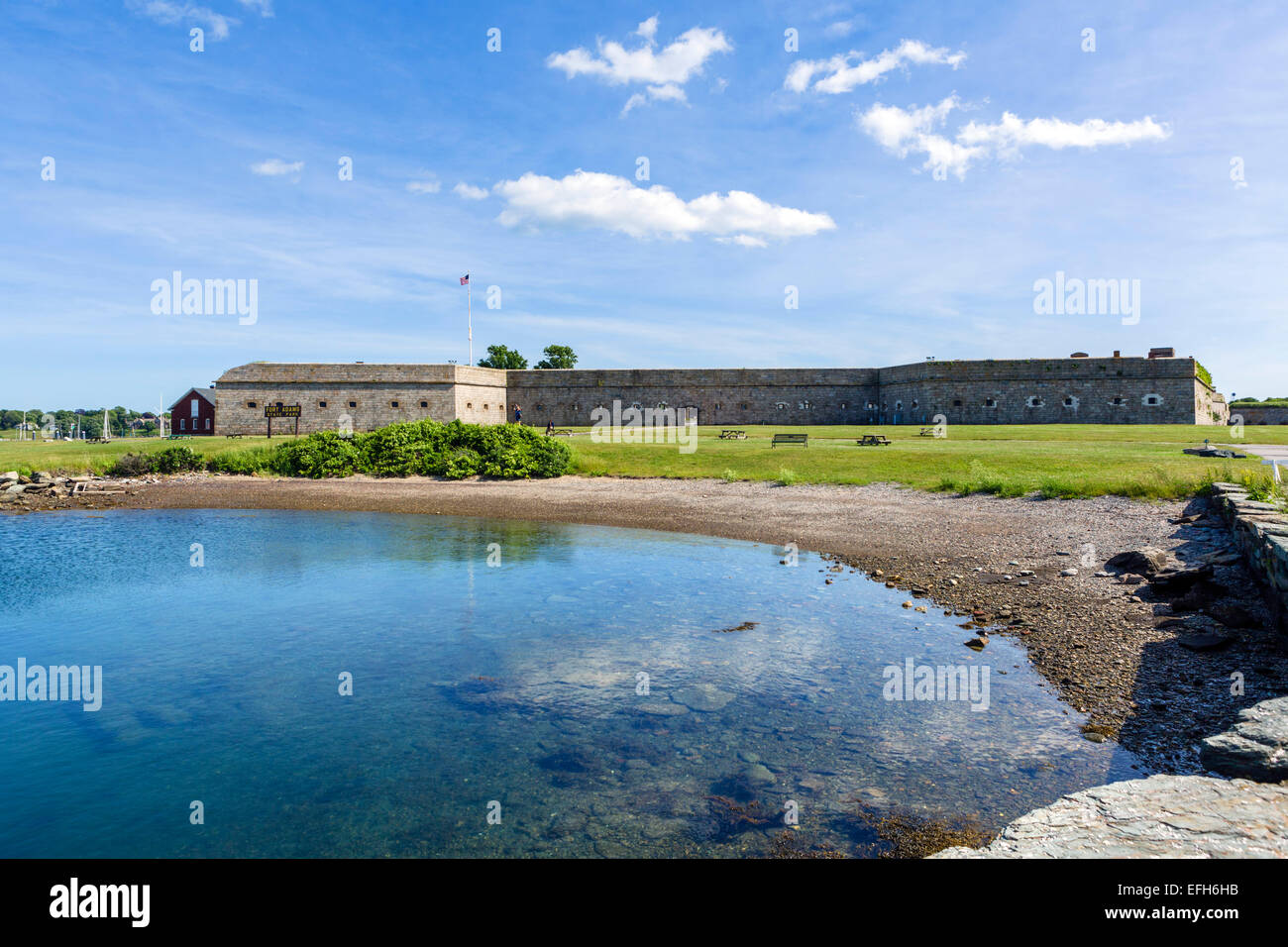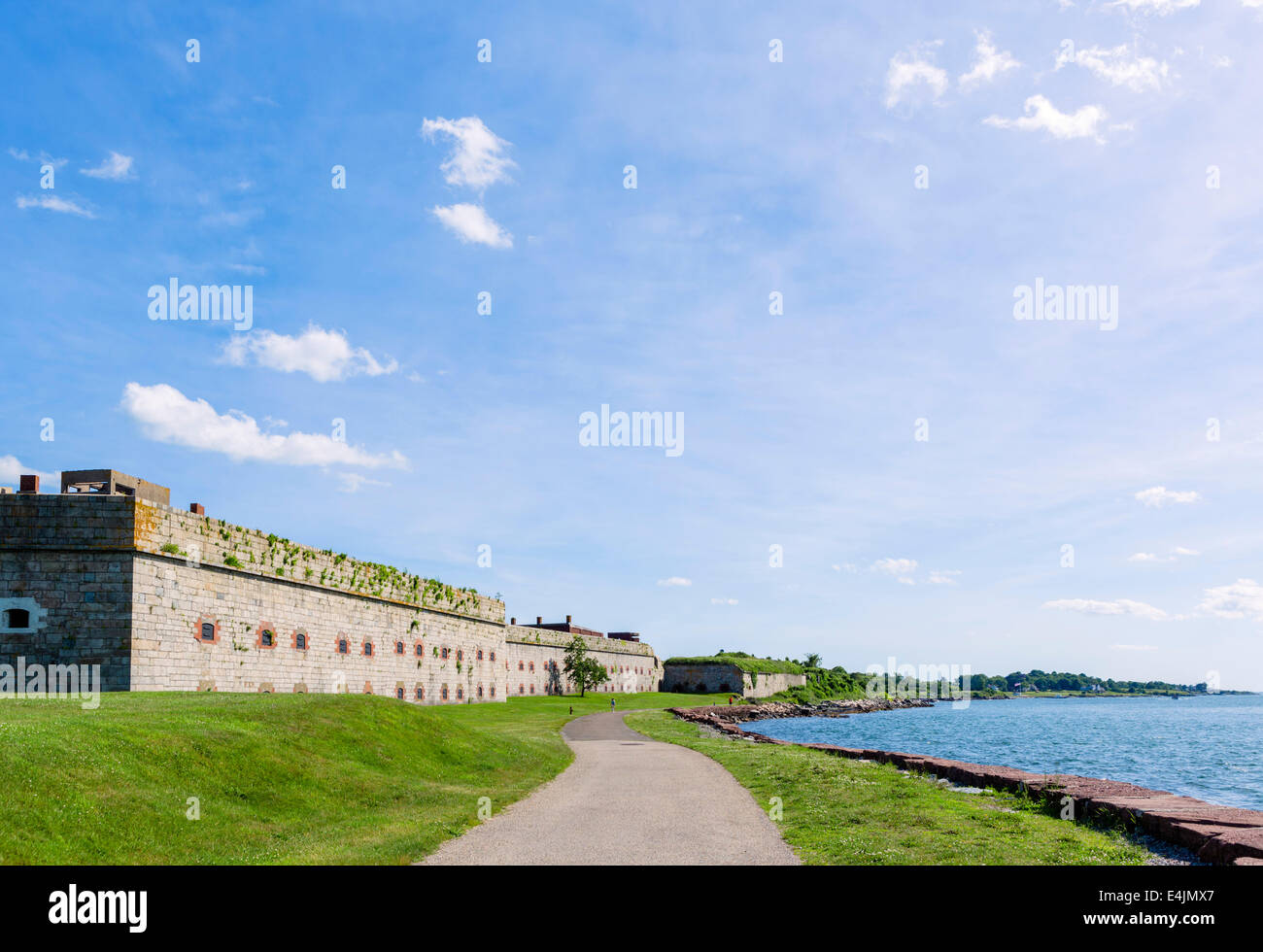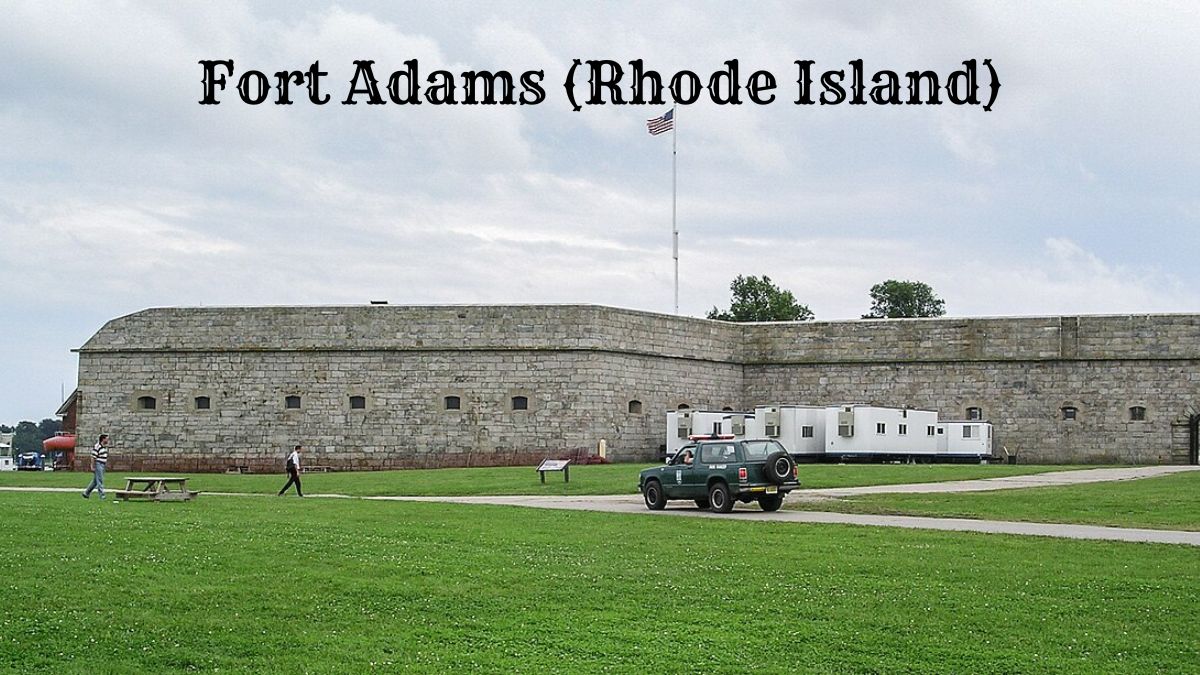
Fort Adams: The Unfired Giant of Narragansett Bay
Perched majestically on a rocky promontory overlooking the strategic confluence of Narragansett Bay and the Atlantic Ocean, Fort Adams stands as a colossal sentinel of stone, a silent testament to a bygone era of American coastal defense. This sprawling fortress, a marvel of 19th-century engineering, was once hailed as the "Gibraltar of America," designed to be an impregnable bastion against any naval threat. Yet, in a twist of historical irony, the mighty cannons of Fort Adams never fired a single shot in anger, earning it the moniker of the "Unfired Giant." Today, it is a Rhode Island State Park, a National Historic Landmark, and a vibrant cultural hub, its imposing walls echoing with the whispers of history and the joyous strains of the Newport Folk and Jazz Festivals.
To truly understand Fort Adams, one must first grasp the context of its birth. The War of 1812, particularly the British burning of Washington D.C., served as a stark and humiliating reminder of America’s vulnerability along its extensive coastline. The nation’s nascent defenses were inadequate, and a comprehensive plan was desperately needed to protect its vital ports and naval bases. This realization spurred the creation of the "Third System" of coastal fortifications, an ambitious and monumental undertaking that would dot the American seaboard with state-of-the-art masonry forts, each designed to withstand the most powerful naval artillery of the era. Fort Adams was to be the crown jewel of this system in New England, safeguarding Newport Harbor and the critical naval assets within Narragansett Bay.
Construction began in 1824, under the supervision of the brilliant military engineer Joseph G. Totten, who would later become the Chief Engineer of the U.S. Army Corps of Engineers. This was no ordinary building project; it was a Herculean undertaking that would span over three decades, not reaching completion until 1857. Thousands of laborers, many of them Irish immigrants, toiled tirelessly, hauling granite blocks, many weighing several tons, from quarries as far away as Massachusetts and Maine. These stones were then meticulously shaped and fitted, creating walls up to 60 feet thick in places, designed to absorb and deflect cannon fire. The sheer scale of the enterprise was staggering, costing an astronomical sum of over $3 million – an amount equivalent to hundreds of millions of dollars in today’s currency. This expenditure underscores the immense strategic value placed on Fort Adams and the vital role it was expected to play in national defense.

The fort’s design was a masterpiece of military architecture. Its five-sided, star-shaped footprint was optimized for defense, allowing for interlocking fields of fire that could repel land and sea attacks from multiple directions. Within its massive walls lay a complex network of casemates – vaulted chambers designed to house cannons and protect their crews – along with barracks, powder magazines, and supply depots, all capable of supporting a garrison of up to 2,400 soldiers. Miles of underground tunnels and sally ports provided protected movement for troops and allowed for surprise sorties against any besieging force. The sheer scale of the fort, covering some 24 acres, made it one of the largest coastal fortifications in the United States.
As the Civil War erupted in 1861, Fort Adams stood ready, fully armed and garrisoned. While other forts across the nation blazed with cannon fire, Fort Adams, ironically, played a more subdued yet crucial role. It served as a vital training ground and recruitment center for Union troops, preparing thousands of soldiers for battlefields far to the south. Notable figures, including Major General Ambrose Burnside, a Rhode Island native and later commander of the Army of the Potomac, trained here. The fort’s strategic location also meant it served as a critical deterrent, ensuring that Confederate naval forces or privateers would not attempt to raid Newport or establish a foothold in the North. Its very presence was a powerful statement of Union strength and resolve.
In the decades following the Civil War, military technology evolved rapidly. Smoothbore cannons gave way to rifled artillery, and ironclad ships emerged as the new naval threat. Fort Adams, initially designed for a different era, underwent several modernizations to remain relevant. Earthworks were added to protect its masonry walls from the new, more powerful projectiles, and more advanced disappearing guns were installed in later years, designed to pop up, fire, and then retract behind protective parapets. During the Spanish-American War, the fort was again actively garrisoned, though it saw no combat.
The two World Wars brought renewed purpose to Fort Adams. In World War I, it served as a critical command center for coastal defenses, coordinating anti-submarine nets across the bay and training thousands of soldiers for overseas deployment. During World War II, its strategic importance surged once more. It became a key naval base, housing an anti-aircraft artillery training center and serving as a crucial link in the chain of coastal defenses protecting the vital industrial centers of New England. Anti-submarine nets were again deployed across the mouth of Narragansett Bay, controlled from the fort, to prevent U-boat incursions. For a brief period, it even housed German prisoners of war.
However, the post-World War II era marked the beginning of the end for Fort Adams as an active military installation. The advent of air power, long-range missiles, and nuclear weapons rendered fixed coastal fortifications largely obsolete. In 1950, after nearly 130 years of continuous military service, Fort Adams was officially decommissioned. Its guns were removed, its barracks emptied, and its mighty walls fell silent, seemingly destined to fade into obscurity.
But Fort Adams was not to be forgotten. In 1965, the fort and its surrounding land were transferred to the State of Rhode Island, initiating a new chapter in its long and storied history. It was reborn as Fort Adams State Park, opening its gates to the public and embarking on a journey of preservation and transformation. Today, it stands as a unique blend of historical monument and public amenity.
The most striking paradox of Fort Adams remains its "unfired" status. It was built with immense effort and expense, designed to unleash a devastating barrage, yet its cannons never roared in battle. Some might view this as a failure, but in truth, it speaks to its profound success. Its very existence, its formidable presence, served as an effective deterrent. The "Gibraltar of America" fulfilled its mission not through destruction, but through the silent power of prevention. It was a fortress that won its battles by merely being there, an enduring symbol of peace through strength.
To walk through Fort Adams today is to step back in time. Visitors can explore the labyrinthine network of underground tunnels, their cool, damp air whispering tales of soldiers and secrets. The immense parade ground, once filled with marching troops, now hosts the vibrant energy of the Newport Folk Festival and Newport Jazz Festival – two of the nation’s most iconic music events, drawing thousands to its historic grounds each summer. The contrast is palpable: the rigid military order of the past juxtaposed with the free-spirited celebration of the present. From its ramparts, one is treated to breathtaking panoramic views of Narragansett Bay, the iconic Newport Pell Bridge, and the distant shores of Jamestown, a vista that underscores the fort’s strategic brilliance.

The preservation of Fort Adams is an ongoing effort, meticulously managed by the Fort Adams Trust, a non-profit organization dedicated to its restoration and interpretation. Guided tours offer fascinating insights into the lives of the soldiers who garrisoned the fort, the engineering marvels of its construction, and its evolving role throughout American history. Visitors can peer into the dark mouths of casemates, imagine the rumble of cannons, and feel the weight of history in its massive stone walls.
Fort Adams is more than just a relic of military architecture; it is a living museum, a public park, and a cherished cultural landmark. It stands as a powerful reminder of America’s commitment to national security, the ingenuity of its engineers, and the ever-changing nature of warfare. The Unfired Giant, silent yet commanding, continues to watch over Narragansett Bay, its legacy not one of conflict, but of enduring vigilance, a testament to the idea that sometimes, the greatest strength lies in the power of deterrence, and the mightiest fortress can achieve its purpose without ever firing a shot. Its story is a compelling narrative of preparedness, preservation, and the unexpected ways history can shape the present.


